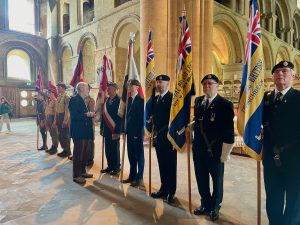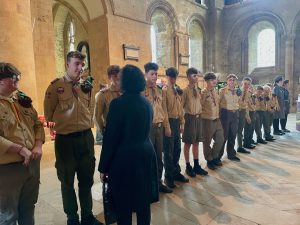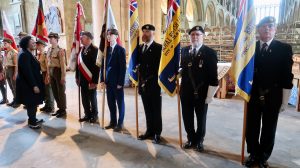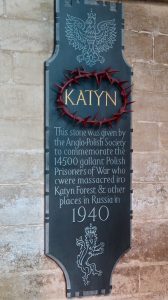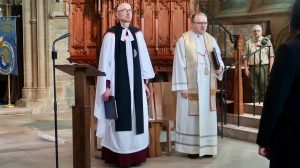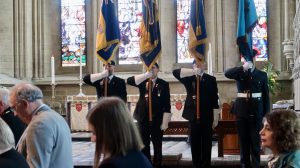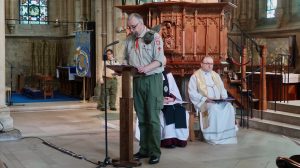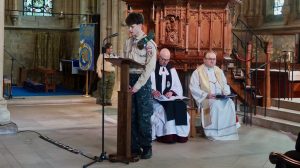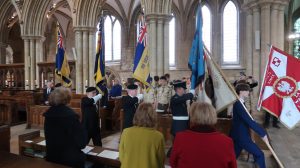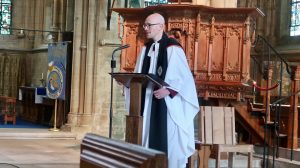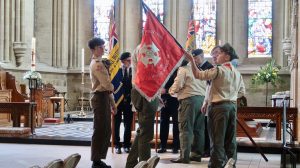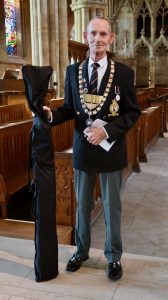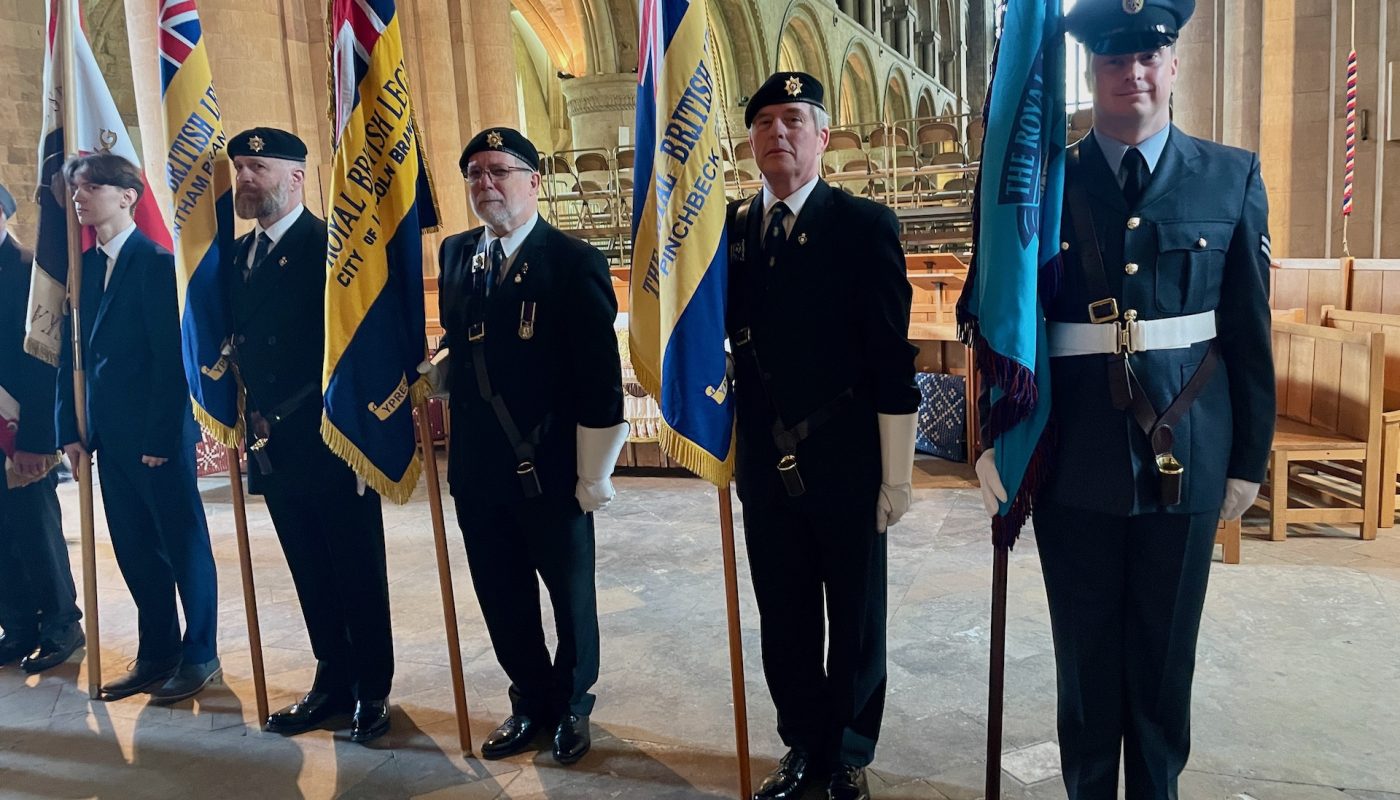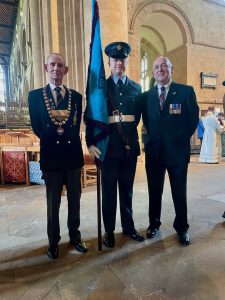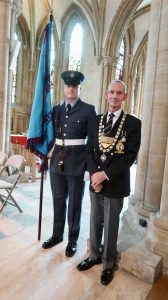Today, 4 May 2024 in Southwell Minster, I attended a very moving service commemorating the Polish that lost their lives at Katyn. Michael Reilly (Chairman), James Scott (Standard Bearer) and Jerry Flint attended the ceremony on behalf of RAFA Newark Branch.
Information below explaining the Katyn Massacre is extracted from this website. https://bitaboutbritain.com/katyn/
In 1940, more than 4,500 Polish nationals were murdered by the NKVD, the Soviet Union’s sinister security police which later morphed into the KGB. The men, scores of whom had their hands bound, were shot in the back of the head and buried neatly in mass graves. In 1943, the Nazis found the bodies – many of which had identity papers on them – and promptly accused the USSR of mass murder. The Soviet Union, in turn, blamed the Germans. Fifty years after the event, in 1990, in the spirit of glasnost, or ‘transparency’, the last leader of the Soviet Union, Mikhail Gorbachev finally admitted that the victims had been executed on the orders of Stalin and the Politburo. It also transpired that there were other mass graves of murdered Poles, at Kharkov in the Ukraine and at Miednoye in Russia. The total number of dead was in the region of 25,700.
Those slaughtered included army officers, policemen, lawyers, businessmen, engineers, teachers, doctors, professors – and at least one of them was a woman. They had been taken captive when, in September 1939, Poland was simultaneously invaded by the Soviet Union from the east and by Nazi Germany from the west – in accordance with the agreement, the Nazi-Soviet Pact, reached between Hitler and Stalin the month before. The German invasion prompted Britain’s and France’s declarations of war on 3rd September 1939. The Polish PoWs were held in camps, prisons and at other locations in Russia and the Ukraine. Here were potential leaders of Poland who could easily be liquidated. Probably, it was concluded that they were unlikely ever to be ‘re-educated’ into the Soviet version of communist philosophy. They were ‘bourgeois’ and therefore they posed a threat. There was, in any event, little love between the USSR and Poland.
By the time the bodies were found at Katyn, of course, the Soviet Union was an ally of Britain and the USA, and the common aim was defeat of the common enemy – Nazi Germany. The role of the Soviet Union was decisive in achieving this victory. In that context, and probably mindful of a difficult post-war settlement in which Soviet troops would occupy large parts of Europe, neither the British nor the US governments wanted to risk antagonising Stalin. It was easier, and tactically wise, to publicly disbelieve Nazi propaganda. Indeed, knowledge of the Soviet Union’s guilt was suppressed at the time. Possibly even more controversially, after 1945 and with the Cold War in full swing, successive governments resisted requests to erect a memorial to the victims of Katyn, presumably because it was viewed as provocative.
There are other Katyn memorials in Glasgow, Manchester, Southwell, New Jersey, Toronto, Baltimore, Budapest and, of course, in Poland. The Katyn War Cemetery, where I gather the mass graves remain still, officially opened in 2010.
